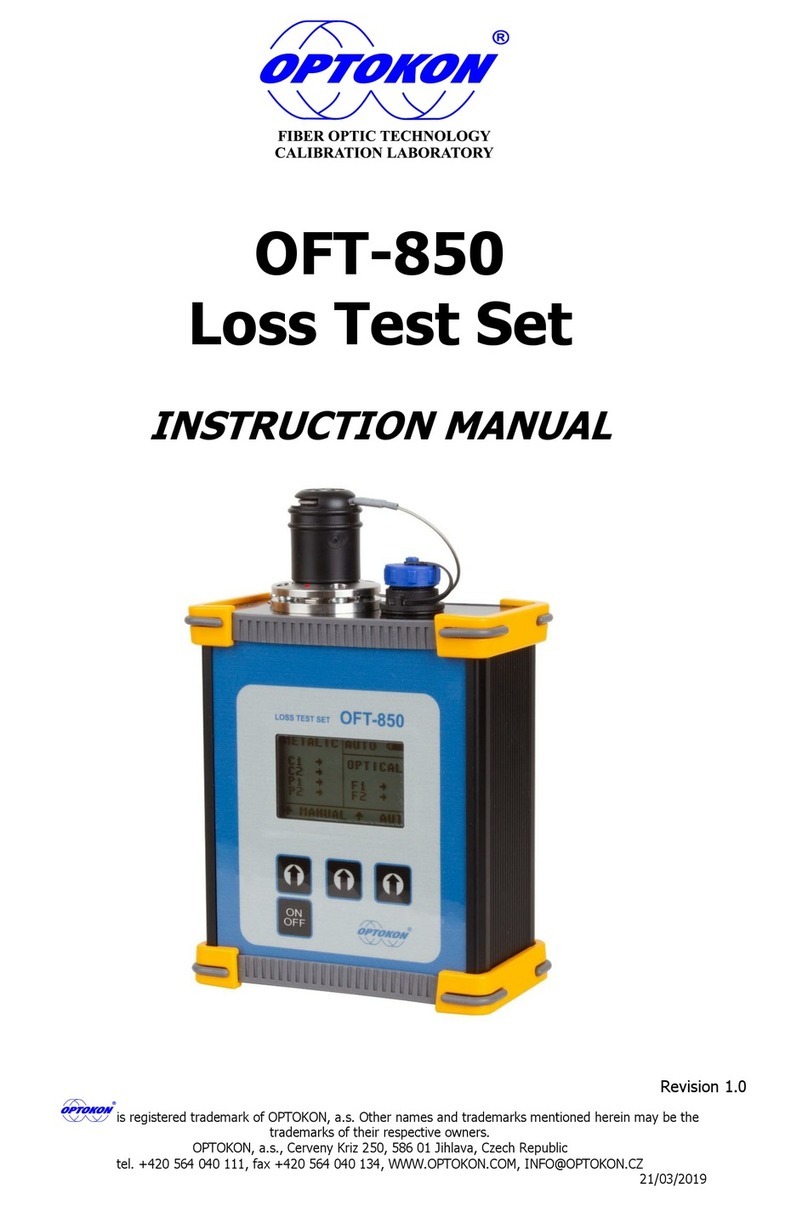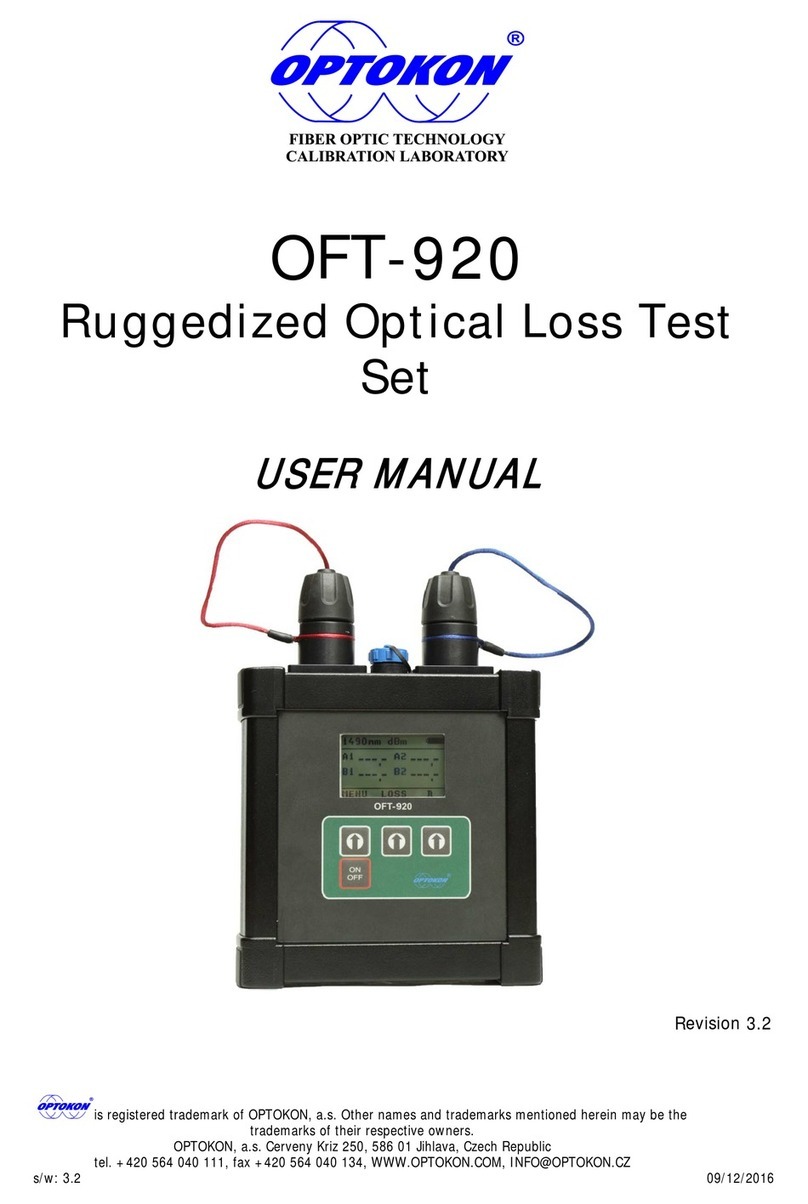
OFT-840 INSTRUCTION MANUAL
9
7.3 Recommended cleaning and mating instructions
Cleanliness will affect the performance of an
optical fiber system. Perform the following
procedures prior the installation. Clean all
connectors, adapters, and attenuators before
making any connections. The following cleaning
materials are recommended and may form part
of Your cleaning kit:
Lint-free laboratory wipes.
Isopropyl alcohol in pressurised
dispenser
Lint free pipe cleaners.
Clean, dry, oil-free compressed air.
CLEANING
Connectors/Terminators:
1. Fold a clean, new wipe into a 2” by 2” square
pad.
2. Moisten, but do not saturate, the pad with
alcohol making a spot approximately 1/2” in
diameter.
3. Open the protective cap (E2000 only).
4. Press the ferrule and face into a wet spot on
the wipe. Using force, twist the ferrule so
that a hard wiping action takes place. Repeat
twice, using a clean alcohol-moistened at
each time.
5. Press the ferrule end face into a dry spot on
the wipe. Using force, twist the ferrule so
that a hard wiping action takes place
6. Close the cap (E2000 only)
7. Discard the used pad.
Attenuators:
1. For an exposed ferrule (in-line type), see
connector cleaning procedure, blow the other
end dry with clean compressed air.
2. Clean bulkhead attenuators only by blowing
with clean compressed air.
Adapters:
1. Moisten one end of a lint-free pipe cleaner
with alcohol.
2. Remove express alcohol from the pipe
cleaner with a clean wipe.
3. Insert the moisten pipe cleaner into either
end of the adapter and scrub in and out so
that the inside surface of the adapter is
wiped by the pipe cleaner. Repeat this step
for the opposite end.
4. Insert the dry end of the pipe cleaner into
either end of the adapter to remove any
residual alcohol. For oversized adapters
(biconic), slightly blow the middle of the pipe
cleaner fog better surface contact. Repeat
this step for the opposite end.
5. Blow the adapter dry with clean compressed
air.
MATING
SC, MT-RJ, LC:
1. Align the housing key with the slot in the
adapter.
2. Push the connector into the adapter until a
click is heard/felt indicating the latching
system is engaged. When the SC connector
is fully engaged, the white stripes on the side
of the housing should be hidden inside the
adapter.
FC:
1. Insert the ferrule tip into the adapter.
2. Align the key with the slot in the adapter.
3. Push the connector into the adapter until the
coupling nut reaches the adapter housing.
4. Screw the coupling nut clockwise into the
adapter.
E2000:
1. Align slots with key on adapter.
2. Push the connector into the adapter until it
clicks.
ST:
1. Align the ferrule hub key with the slot in the
adapter.
2. Insert the connector into the adapter until
the coupling nut reaches the adapter
housing.
3. Align the bayonet slots-on the coupling nut
with the pins on the outside of the adapter.
4. Push the coupling nut into the adapter while
rotating the coupler nut clockwise to lock the
bayonet and secure the connection.
Infrared radiation is invisible and can
seriously damage the retina of the eye Do
not look into the ends of any optical fiber.





























